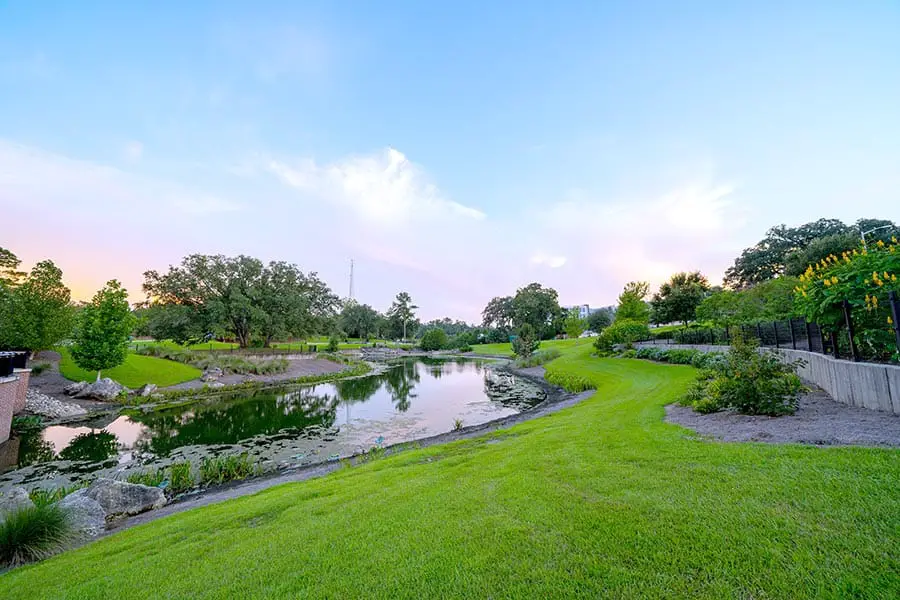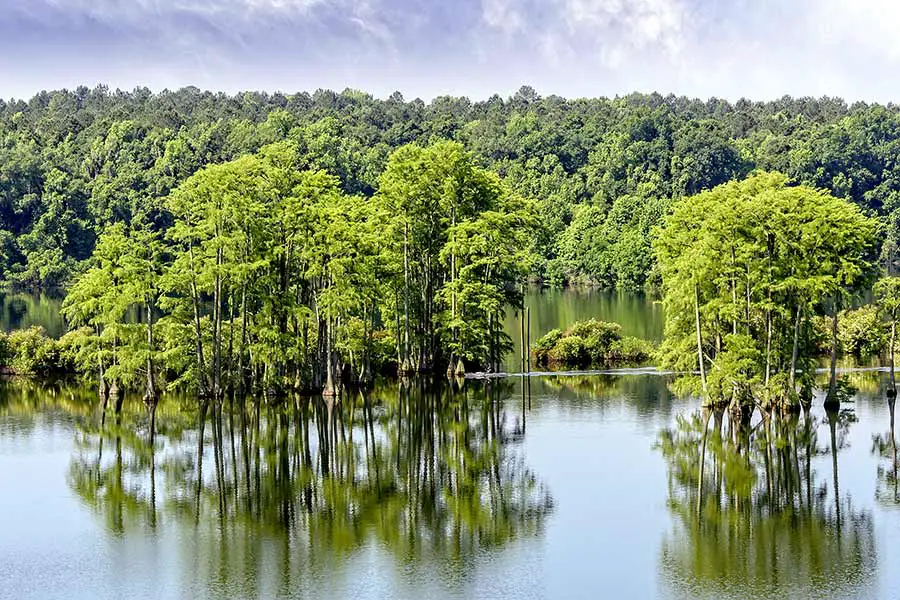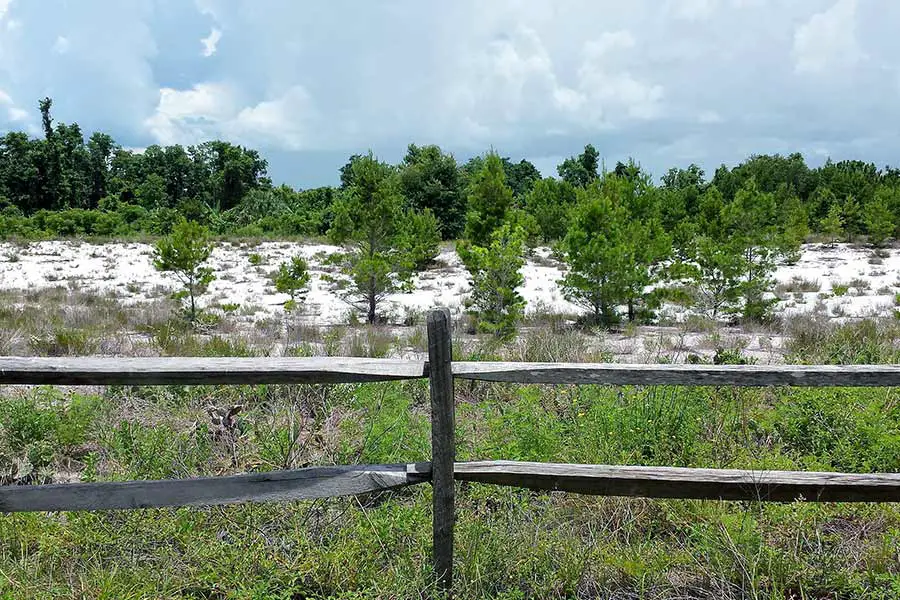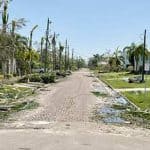
Florida is renowned for its beautiful beaches, phenomenal wildlife, interesting locals, and fun attractions. But you don’t hear much about the topography of the Sunshine State. For example, is Florida flat or hilly?
Florida is a very flat state. While there are some hills and ridges in the north and central regions of the state, Florida is actually the flattest of our United States. Between the sea-level coastal areas, the rivers and estuaries, and the Everglades, Florida is definitely a flat state.
So, what are the highest and lowest points in Florida? Is Florida the flattest state in the union? Does the lack of mountains affect the weather? In the following sections, you will learn the answers to these questions and a lot more!
Florida’s Hill Countries
Florida is a big state. In Florida, you can find all kinds of terrain: ancient wetlands, marshes, swamps, forests, and of course, beaches, rivers, lakes, and estuaries. One thing you will not find in Florida is mountains. The Sunshine State does not have any mountains at all and is generally pretty flat. But surely there are some hills in Florida?
There are several hilly regions in Florida. The first, and also one of the prettiest places to visit, is the Ocala area. Ocala’s hills sprawl and roll, giving the terrain pleasant curves and contours.
Ocala is known for horse culture: people raise thoroughbred horses in Ocala, some of which have made it into significant races like the Kentucky Derby.
In fact, the hill country around Ocala is home to thousands of horse farms. If you take a scenic plane ride over Ocala, you’ll see horse tracks, stables, and barns dotting the lush, rolling hills.

In addition, the streets of Ocala are home to some beautiful Victorian homes and an assortment of custom homes and cottages which add character to the area. While it doesn’t get as much credit as our stunningly gorgeous beaches, the Ocala area is a very scenic and picturesque part of Florida.
Another beautifully hilly part of Florida is the Lake Wales Ridge. There is still a lot of beautiful old-world Florida left in this region. If you’re a camper or a hiker, there are some gorgeous trails and campsites in the Lake Wales area, and you’ll see some pretty flowers, plants, and creatures roaming the wilds near the Lake Wales Ridge.
The Lake Wales Ridge, especially the area around the US 27 corridor, is hugely popular with transplants to Florida. As a result, new housing developments and neighborhoods are popping up in the region like mushrooms after a spring rain.
The orange groves and favorable growing conditions of the area make it Florida’s wine country; there are many local wineries and brewing companies who are using the fruits of the hills to make interesting and delicious libations.
Florida’s third distinctively hilly area is the part of the state around Tallahassee. Not only is Tallahassee the state capitol of Florida, but it is also full of beautiful hills, and it’s only about a 45-minute-drive from the ocean. It’s also close to Georgia and several state forests, which makes Tallahassee an excellent place to live or visit if you want to experience the hills, the woods, and the beach.

What is the Highest Elevation in Florida?
The highest elevation in Florida is found at the summit of mighty Britton Hill. Such a mighty, towering peak requires extensive preparation and planning before you and the family attempt to reach the summit. You may need to hire a porter to carry your bags to the top, and you should master basic technical climbing before attempting to tackle this monstrous summit. Novice climbers may want to bring oxygen and take frequent breaks. I was only joking!
Britton Hill, located in Walton County near the Alabama state line, is only about 345 feet above sea level and is a pretty easy climb. It is surrounded by the beautiful environs of Lakewood Park, which is a great place to take the family. You can bring a picnic lunch, toss a frisbee around with the kids, and enjoy a nice walk on the well-marked nature trails that criss-cross the parkland.
To get to Britton Hill, set your GPS to 2759 North County Highway 285, DeFuniak Springs, FL, 32433.
Other Posts of Interest
- Are Key West And The Florida Keys The Same?
- Does Florida Have Bayous?
- What Are Mangroves In Florida? (And Why Are They So Important)
- Does Florida Have Pythons?
What is the Lowest Elevation in Florida?
The lowest naturally occurring elevation in Florida is sea level. While some states do have naturally occurring places below sea level – places like Death Valley and New Orleans come to mind – Florida does not.
There are many mines in the central part of the state that excavate the earth far below sea level, but unless you are a miner, you’re not likely to find yourself at the bottom of a phosphate mine. So when you go to the beach in Florida, you’re at the lowest point in the state.
Phenomenal Florida Fun Fact: Unlike traditional ore-digging mines, phosphate mines are not very deep. They generally only extend to about 60 feet below sea level and, per state law, must be filled and reclaimed after the ore-containing materials have been extracted.
What is the Average Elevation in Florida?
The average elevation in the Sunshine State is a whopping six feet above sea level. The state is generally at higher elevations in the central portion and lower elevations in the coastal regions.
Places like the Everglades are very close to sea level; the Lake Wales Ridge, located in central peninsular Florida, contains the highest point in central Florida at 312 feet above sea level.
Pro Tip: One of the best places to visit on the Lake Wales Ridge is Bok Tower Gardens, located in beautiful Lake Wales, Florida.
What City in Florida has the Highest Elevation?
The highest point in Florida is Britton Hill, which can be found in the town of Lakewood, an unincorporated area in Walton County in the panhandle portion of the Sunshine State.
The most elevated major city in Florida is Tallahassee (also located in the panhandle) which sits at 203 feet above sea level.
Lakeland, located in central Florida, sits at 194 feet above sea level. Florida’s other major cities are primarily situated on the coastline and are very close to sea level.
Is Florida the Flattest State?
While Midwestern states like Kansas have a reputation as being very flat, topographers studying the relative flatness of states have determined that Florida is the flattest state.
Other contenders for the flattest state include Illinois, North Dakota, Texas, Delaware, and Indiana, but the Sunshine State is indeed the flattest of them all.

How Does the Lack of Mountains Affect the Weather?
Mountains have an outsize impact on weather patterns. These patterns stem from a number of interesting phenomena.
First, mountains are an obstacle to stable airflow. Air is a fluid like water, so imagining air masses as water can help you see how it moves. In flat states like Florida, air masses can flow over the state with minimal interruption: imagine a stream of water flowing over a flat surface, and think about how smoothly it moves.
However, in mountainous regions, airflow is interrupted by mountains: picture a smooth stream of water hitting a bunch of big, gravelly rocks and how it causes the water to froth and foam. Mountains do that to air.
When air masses hit a mountain, they are forced upwards. This rise in elevation causes a drop in temperature, which in turn causes water vapor to condense into clouds. These clouds then experience the orographic effect, where the change in temperatures causes clouds to dump precipitation on the windward side of the mountains, often in the form of thunderstorms or snowstorms.
Related to the orographic effect is the “rain shadow” effect. The development of clouds and precipitation on the windward side of the mountain tends to cause a drying effect on the leeward side.
The air that makes it over or around the peak of the mountain tends to be drier and warmer, which causes the leeward side of the mountain to be less moist and affects flora and fauna on the leeward side. Florida, not having mountains, does not experience this phenomenon.
So what does all this mean for Florida? Florida’s flat terrain means that air masses can flow over the state with minimal interruption. There’s no orographic effect, and no windward or leeward side to experience variances in rainfall.
The main driver of Florida’s typical weather is sunshine and convective activity, as opposed to the interaction of air masses and mountainsides.
Florida: Flat, but Fun!
Some of Florida’s most amazing things are an artifact of its flatness. The sprawling, sandy beaches; the unique and incredible Everglades; the wetlands, lakes, and rivers; all of these fabulous places rely on Florida’s flatness to be what they are.
Florida is probably not for you if you’re craving some mountain climbing or a leisurely stroll through the foothills. But next time you want to hit the beach, see some beautiful tropical birds, or enjoy a walk through the tranquility and stillness of the woods, come on down to the Sunshine State. We may be flat, but we’re a lot of fun.





